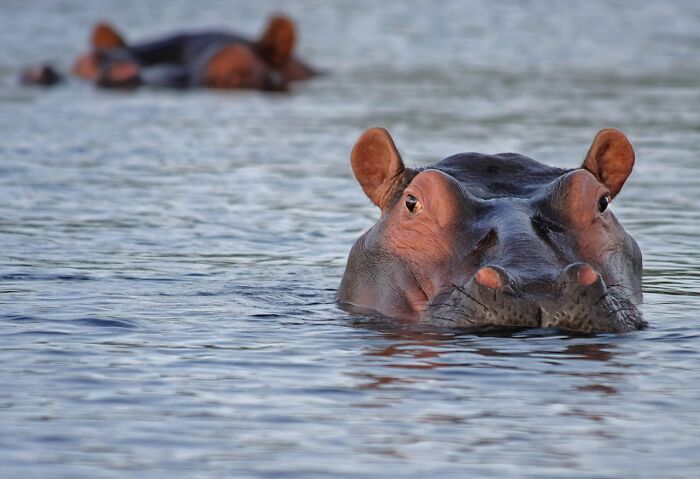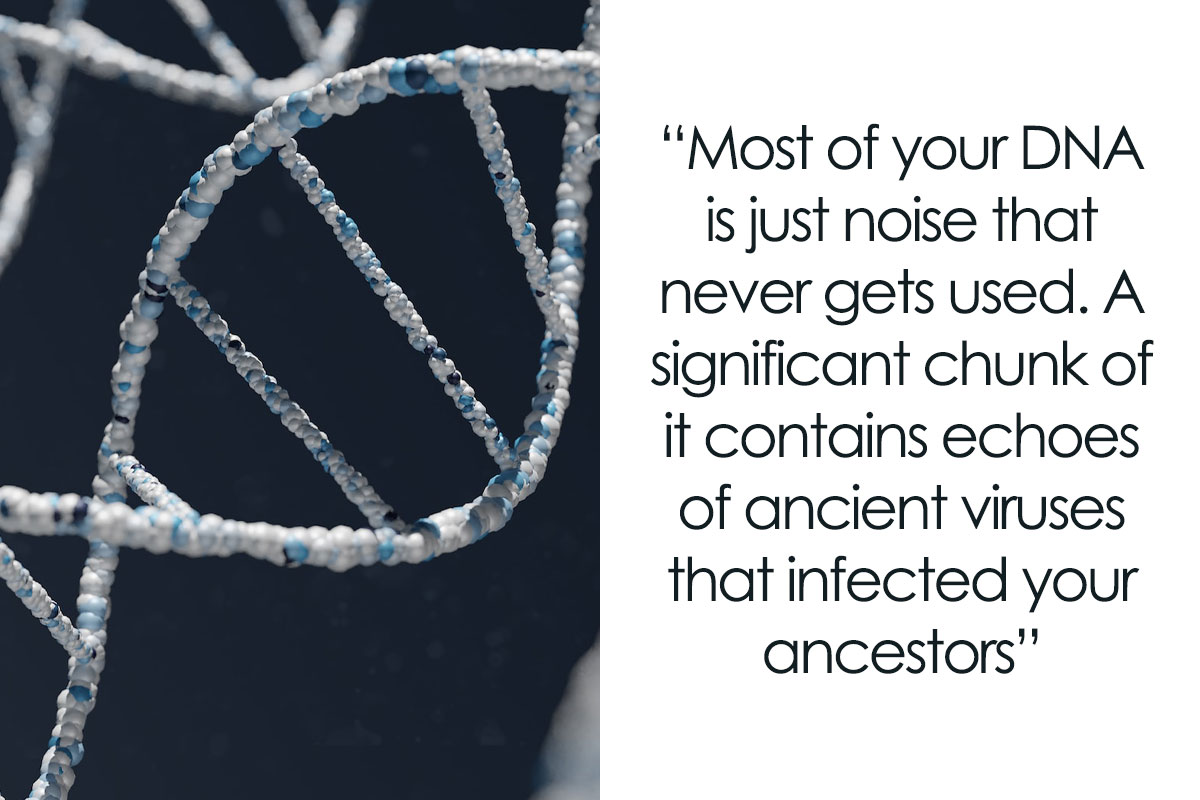
“Cheetahs Are Extremely Inbred”: 50 Interesting Genetics Facts You May Have Missed At School
A great part of living in the 21st century is that if you have a device that connects to the internet, you have access to hundreds, if not thousands of experts who are often eager to share in-depth knowledge about the world we live in.
Someone asked “What is a genetics fact that not a lot of people know?” and people detailed their best facts. From the peculiarities of our DNA to interesting new species of plants, get ready to expand your mind as you read through. Be sure to upvote your favorites and comment your thoughts and ideas below.
This post may include affiliate links.
 It's really unfortunate that there are so many people out there that think that it's the mother's fault for not bearing sons. No Gregg, she isn't broken. You're just blasting X's instead of Y's.
It's really unfortunate that there are so many people out there that think that it's the mother's fault for not bearing sons. No Gregg, she isn't broken. You're just blasting X's instead of Y's.
Equally unfortunate: assigning "blame" over the sex of one's offspring at all, thus perpetuating the biased notion that one has more value than the other.
 Perhaps my favourite biology fact is about pharmacogenetics, how your genetics determines the efficacy of drugs on your system due to prevalence of receptors of different types that the drugs target to produce an effect:
Perhaps my favourite biology fact is about pharmacogenetics, how your genetics determines the efficacy of drugs on your system due to prevalence of receptors of different types that the drugs target to produce an effect:
"90% of drugs only work on 30-50% of the population."
I find it so truly wild. But most people I've talked to about it seem to agree that some drug or other doesn't work for them. This really highlights how much of a process finding the right drug for a person is.
I had a lecture on this in uni in about 2016 and it said the future of pharmacology is individual genetic screens for drug effectiveness meaning people don't have to keep trying different drugs until they find the one that works, you would be tested then your doctor would have that info.
I just hope it overcomes the pushback from Big Pharma in my lifetime cause it would be a true game-changer.
 There is a gene called TP53 - it’s referred to as the ‘guardian of the genome’ - it is a tumor suppressor gene and prevents cancer of all types. Humans have two copies and if one is broken/mutated it causes an inherited condition called Li Fraumeni. People with this have a very very high risks for cancer, and the condition can be passed down in families. Elephants have 20 copies of TP53 and therefore rarely get cancer. The Li Fraumeni foundation uses the elephant as its mascot and hopefully we can someday figure out how to replace faulty TP53 genes for these families.
There is a gene called TP53 - it’s referred to as the ‘guardian of the genome’ - it is a tumor suppressor gene and prevents cancer of all types. Humans have two copies and if one is broken/mutated it causes an inherited condition called Li Fraumeni. People with this have a very very high risks for cancer, and the condition can be passed down in families. Elephants have 20 copies of TP53 and therefore rarely get cancer. The Li Fraumeni foundation uses the elephant as its mascot and hopefully we can someday figure out how to replace faulty TP53 genes for these families.
I wonder if it could also block IL-1 - just went down a PubMed rabbit hole that I don’t understand being a patient and not a medical professional. Anyone smart enough to explain it in simple terms to me please??
While it might sound like a cross between dystopian fiction and body horror, some researchers believe that there is a lot of potential to store data and information in our DNA. After all, in one sense, that’s exactly what DNA’s actual function is. That being said, most of us probably don’t want to walk around with our own DNA turned into a sort of USB flash stick when we can literally buy this device in most stores.
Comically, as sci-fi as this idea sounds, it might already be out of date. Research into this topic has found that encoding data into our DNA is not only more costly but less reliable and slower to read than the various means of data storage we already have. So if you really want to get cyberpunk, perhaps get a QR code tattooed or investigate the wonderful world of chipping your palms.
That if you unraveled all of the DNA in your body, and stretched it out in a straight line, you'd be dead.
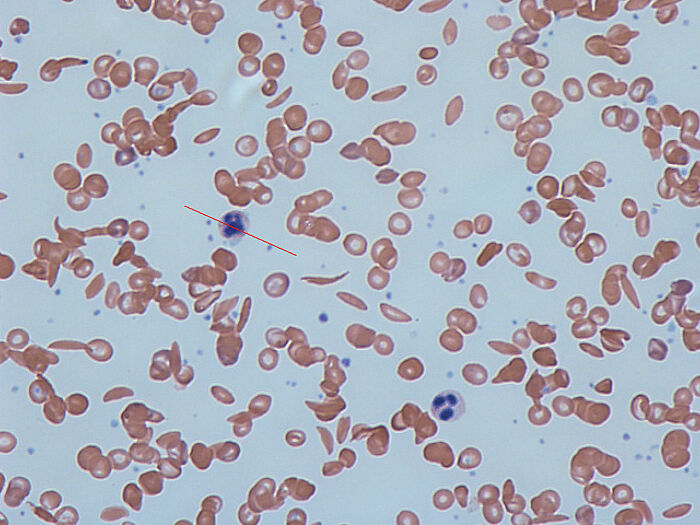 The first crispr-cas treatment for sickle cell has just been approved by the FDA
The first crispr-cas treatment for sickle cell has just been approved by the FDA
 There’s this thing called ACHOO Syndrome where it’s estimated that 18-35% of people on Earth have a reflex that induces sneezing due to bright light.
There’s this thing called ACHOO Syndrome where it’s estimated that 18-35% of people on Earth have a reflex that induces sneezing due to bright light.
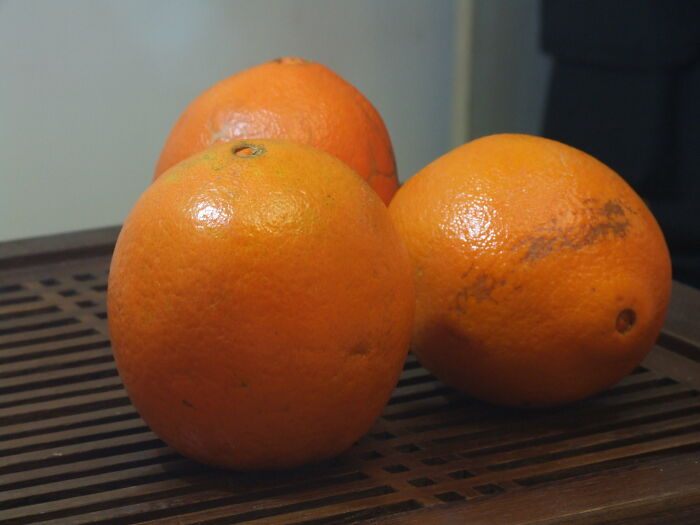 Since navel oranges have no seeds, they are all clones of the original mutated fruit discovered by a Brazilian monk a century ago. The billions and billions of navel oranges that have been grown, sold and consumed since are all genetically identical.
Since navel oranges have no seeds, they are all clones of the original mutated fruit discovered by a Brazilian monk a century ago. The billions and billions of navel oranges that have been grown, sold and consumed since are all genetically identical.
 Having five fingers in each hand is a recessive gene. Polydactyly (having 6 fingers on each hand) is a dominant gene.
Having five fingers in each hand is a recessive gene. Polydactyly (having 6 fingers on each hand) is a dominant gene.
 Cheetahs are extremely inbred. They had a massive bottleneck about 10,000 years ago and had too little diversity to fully recover.
Cheetahs are extremely inbred. They had a massive bottleneck about 10,000 years ago and had too little diversity to fully recover.
That is why we have to do anything we can to help them! They are the only feline who has claws like a dog!
 Your susceptibility to dental cavities. Dental hygiene matters, but genetics plays a huge role, too.
Your susceptibility to dental cavities. Dental hygiene matters, but genetics plays a huge role, too.
It must, because my husband takes better care of his teeth and I eat a lot of candy and he still always has more cavities than me.
 There's a genetic disease called Laron Syndrome that makes you shorter in stature, a longer life expectancy, and near immunity to cancer and diabetes.
There's a genetic disease called Laron Syndrome that makes you shorter in stature, a longer life expectancy, and near immunity to cancer and diabetes.
 If you see a cat with three colors (black, white, and orange), it's got two x chromosomes.
If you see a cat with three colors (black, white, and orange), it's got two x chromosomes.
Cat people tend to know this, but idk about people in general.
 The genes that determine the size of your male parts are on the X-chromosome, so you inherited that from your mom.
The genes that determine the size of your male parts are on the X-chromosome, so you inherited that from your mom.
For simplicity, let's say your mother is 50% Chinese & 50% Spanish. That does **not** mean you are 25% of each.
On paper it would seem so but you can have any combination of those two equaling to 50%. It's not a clean cut in half. It's a *random* 50% given and 50% not. Although, yes there are dominate genes that can give all the kids a certain nose shape or eye color. Still, you and your siblings might get these DNA combos from mom:
- you: 30% C & 20% S
- brother: 12% C & 38% S
- sister: 5% C & 45% S
So if you ever wondered why your sister looks more Spanish than you its because genetics wise she just is more Spanish.
My siblings and I are multiracial, all from the same multiracial parents. Yet we each look like different ethnicities from each other.
 Super rare, but there’s a condition called superfetation where twins in the womb have different gestation dates. Basically, the woman got pregnant, then a few weeks later she got pregnant again.
Super rare, but there’s a condition called superfetation where twins in the womb have different gestation dates. Basically, the woman got pregnant, then a few weeks later she got pregnant again.
1. Most genetics studies were, and are still, done on white western populations. Some things that we "know" about genetics turn out to not work so well in non-white or non-western populations. Loose example: diagnostic tests to check for certain diseases sometimes misdiagnose Americans with African ancestry, because sometimes we don't actually know exactly how certain diseases will look in non-European ancestry patients, we just assume it will be the same.
2. Africa, as a whole, is the most genetically diverse continent for human genetics. Humans outside of Africa went through a population bottleneck, resulting in an overall lack of diversity moving forward. The human blender of genetics in Europe just didn't have many starting ingredients. There are things called linkage disequilibrium maps, which basically map out sections of the genome that are usually found inherited together. In Europe, these maps are quite "chunky", with large identifiable sections that are sort of reliably found intact. But in Africa, the blender was always running and never had a bottleneck, so those maps are basically a much finer puree, with a lot more mixing. This presents certain challenges, as many studies rely on those maps to make predictions, and it's harder to do that when the map for Africa as a whole is basically way more complex.
3. Everyone's cancer is its own unique genetic disease. There is no one true single disease called "lung cancer", just as there is no one single true human genome. Everyone is genetically unique (yes even identical twins), and every cancer is unique.
4. Chromothripsis is a thing where a chromosome pretty much shatters and gets stuck back together all out of order. And... this is sometimes okay. There are cases of people who have chromosomes that have undergone chromothripsis, and they have mild to moderate symptoms, but they're not dead, which is miraculous.
5. Remember in biology class when you learn about mitosis? And there's that step called metaphase where all the chromosomes line up in a line before being separated into two new cells? That spot in the middle of the "X"-shaped chromosomes where the spindles attach to line them up is called the centromere. And it's sort of mysterious black hole of genetics. There aren't usually any genes there, just a chaotic cluster-f**k of repetitive sequence that gets chopped forwards, backwards, repeated 7 times, swapped around and repeated again, etc etc in an area that's hundreds of thousands of nucleotides long. But what's even crazier is that we don't really know *why* they are how or where they are, because *you don't need the wacky wasteland of repeats for them to work*. Almost all centromeres in all animals look like this, but there are exceptions. A very notable exception is that very very rarely in humans, a "mar-del" chromosome can form where a chromosome accidentally loops on itself and pinches (think of that heart thing people do with their thumb and forefinger), resulting in a circular chromosome that still has its centromere, and a "butterfly" chromosome that does not. Without a centromere, a chromosome can't be duplicated into daughter cells successfully, and cells can't live without the genes on that butterfly chromosome so this should be lethal if it happens early on in development. But surprise, a centromere can and has spontaneously formed on the butterfly chromosome, making them tiny, viable chromosomes that work pretty much fine! But like I said this is super rare, with only a few recorded cases ever. Centromeres in general are very cool and very mysterious.
6. Everything about modern next-generation genetic sequencing is super interesting, yet not well known to the general public. I won't brain dump about it, but if you want to know more, ask and I will!
not everyone may know is that your genes play a role in determining whether you are more likely to be a morning person or a night owl
 If you set aside ethics and set out to do it, it would only take 33 generations to create a human being who was the descendant of everyone currently alive and able to have children.
If you set aside ethics and set out to do it, it would only take 33 generations to create a human being who was the descendant of everyone currently alive and able to have children.
Also, pedigree collapse: no living person has as many unique ancestors as they mathematically should. Every person has, biologically, 2 parents, 4 grandparents, 8 great-grandparents, etc, doubling every generation. 30 generations back without any degree of inbreeding would require over a billion unique 28x great grandparents, more than the entire world population for 1100 AD. Every single human's family tree is full of people marrying and having children with cousins of some genetically-unimportant degree over the last thousand years.
I found the same people in my ancestry twice. To be fair, they were in the Cape (south Africa) and the population wasn't huge. They were second cousins.
 Two brown eyed parents can have a blue eyed child.
Two brown eyed parents can have a blue eyed child.
Two blue eyed parents can have a brown eyed child IF one of them has a working HERC-2 gene. (I researched this for a Star Trek TNG fanfic I was writing.)
When you’re pregnant, bits of DNA from your baby invade your body and settle all over permanently - including in your brain. Researches found this by looking for male DNA in the brains of deceased 70 year olds. Interestingly, mouse studies have also shown that fetal cells within the mother have restorative properties and will rush to places like the heart, kidneys, lungs, liver if it’s injured and can even become cells that begin beating. One of the theories I have seen but I don’t know if anyone knows for certain if this is true is that these cells enter our bodies so a ‘host’ is less likely to reject the parasite baby.
“Parasite baby” 🤣 they don’t stop being parasites as they grow up either!
 Birthing identical twins is not an inherited trait. It’s random. Fraternal twinning is inherited, but only from mother to daughter. My MIL ‘took credit’ for me having identical twins because she had fraternal twin siblings. When I explained that genetics proved her wrong she was not having it!! 🤣
Birthing identical twins is not an inherited trait. It’s random. Fraternal twinning is inherited, but only from mother to daughter. My MIL ‘took credit’ for me having identical twins because she had fraternal twin siblings. When I explained that genetics proved her wrong she was not having it!! 🤣
 Gastrointestinal issues can be passed on by parents. They run in your jeans
Gastrointestinal issues can be passed on by parents. They run in your jeans
 People with moles live longer. Something to do with telomeres.
People with moles live longer. Something to do with telomeres.
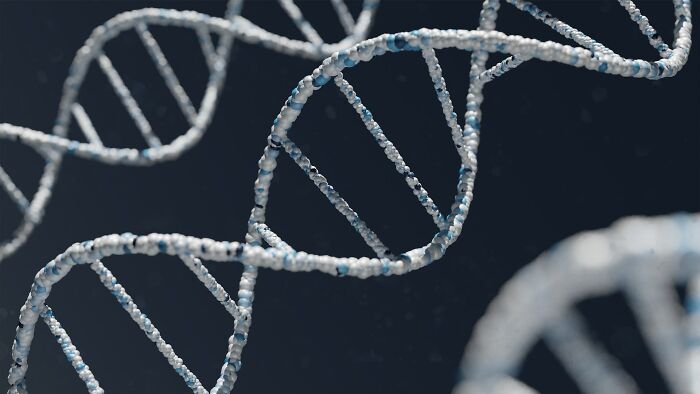 Most of your DNA is just noise that never gets used, and a significant chunk of it contains echoes of ancient and prehistoric viruses that infected your ancestors.
Most of your DNA is just noise that never gets used, and a significant chunk of it contains echoes of ancient and prehistoric viruses that infected your ancestors.
just because we don't know the function of something, does not mean it is useless 😌
I'm a geneticist with a mediocre master's degree in biology and currently pursuing a PhD in Bioinformatics. Here are some insights:
1. The accuracy of consumer and clinical genetic tests is often questionable due to the rapid pace of scientific advancements outpacing their application in the industry. The notable exceptions are information about Neanderthal ancestry (which is significant enough to have earned a Nobel Prize in Medicine) and a few critical mutations like the sickle cell variant and others related to blood.
2. Genetically, most humans are nearly identical, with differences being incredibly minute. This means that, barring age and sex, achieving success in various fields – whether it's social, intelligence, or physical appearance – is possible without genetic modifications.
Everyone likely has a unique genetic trait that gives them a significant advantage, however. This is currently identifiable only in a lab setting. Understanding your unique trait, which often involves the expression of certain molecules, might require professional scientific interpretation.
3. Many severe genetic diseases, such as insulin-dependent diabetes, are only about 50% determined by genetics. Factors like early developmental conditions, including a mother's diet during early pregnancy and infections, play a paramount role.
4. Despite common belief, Neanderthals were not a separate species but rather a part of the human family. For perspective, Europeans and the Khoisan people of South Africa have been genetically divergent for about 300,000 years, not much less than the 500,000-year divergence between humans and Neanderthals.
5. Factors beyond genetics, such as living in a highly controlled environment (like a prison), having access to specific nutrition, owning a car and a separate house, and engaging in mental activities like language learning, math, statistics, and team video games, can significantly impact personal development. Genetics helps us understand and appreciate the influence of these non-genetic factors.
The field of genetics is incredibly dynamic and continually evolving, offering many more fascinating insights.
 Genetic chimera is arguably the most interesting condition. It is possible (and documented) for a woman to give natural birth but the baby not match her DNA test.
Genetic chimera is arguably the most interesting condition. It is possible (and documented) for a woman to give natural birth but the baby not match her DNA test.
Essentially, 2 fertilized eggs merge at a very early stage and developing into a single organism. Different parts of the body comprised of obe or the other genome.
It's most commonly discovered in domestic animals that have unexplainable color combinations, often (but not always) divided symmetrically.
It happened to one woman. She almost had her child taken away from her because their DNA was different. It was only after she became pregnant again and gave birth, with DNA testing done immediately, that it was discovered she had genetic chimera and absorbed her fraternal twin during their embryonic stage of development.
The mitochondria is the powerhouse of the cell.
Trauma can be inherited (look up transgenerational trauma).
So if you feel more sensitive than most people it might be because your grandma experienced something horrible.
On average it takes three generations to heal a trauma if I remember correctly. But only if properly treated and the parents do not retraumatize their kids with their unconscious trauma-responses. This way unhealthy behaviors would become the norm and eventually become genetically preferred automatic behavior for future generations.
I learned about this after having my daughter. She shows trauma responses despite no history of trauma herself. If you have trauma, get therapy before you have kids.
Red hair and blue eyes is the rarest hair/eye colour combination
 Not sure what gene but Redheads can take more pain then others also require more anesthesia.
Not sure what gene but Redheads can take more pain then others also require more anesthesia.
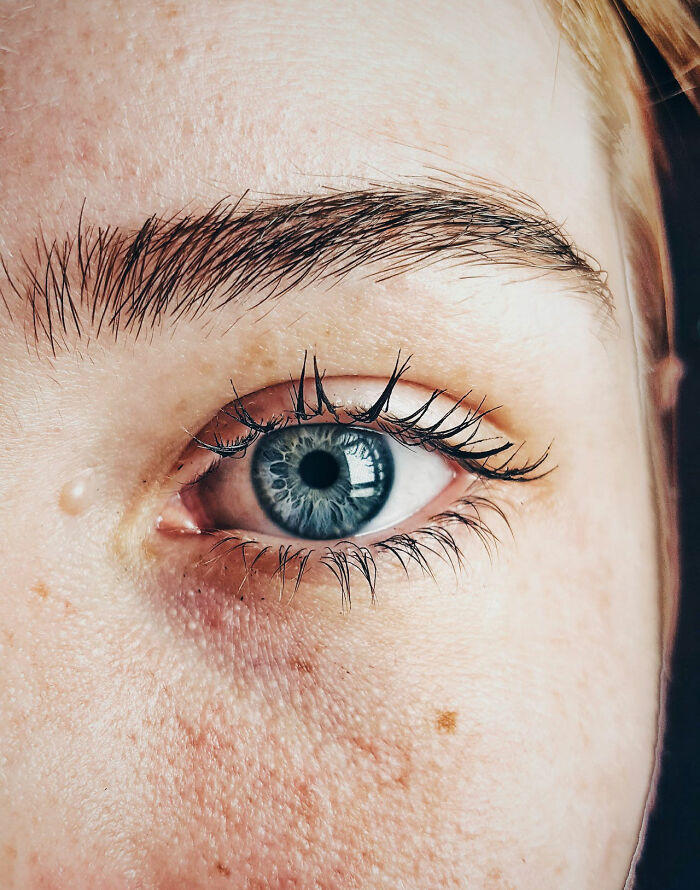 All people with blue eyes are descended from the same person
All people with blue eyes are descended from the same person
All humans are descended from the same woman 150,000 years ago. She's called mitochondrial Eve. (And she was a Cylon -human hybrid according to Battlestar Galactica.)
One in 40 Ashkenazi Jewish women has a BRCA gene mutation. Mutations in BRCA genes raise a person's risk for getting breast cancer at a young age, and also for getting ovarian and other cancers. That is why Ashkenazi Jewish women are at higher risk for breast cancer at a young age.
 Twins can have different fathers.
Twins can have different fathers.
 Pregnancy can alter your DNA as you create a new life. Allergies can appear or disappear, hair texture/colour can change.
Pregnancy can alter your DNA as you create a new life. Allergies can appear or disappear, hair texture/colour can change.
A) As discussed above, hair can be affected by hormones. B) Pregnancy doesn't 'alter your DNA.' What happens, basically, is that the baby's cells enter your bloodstream through the placenta and some of the genetic material is incorporated into your own cells, which seems to particularly have an effect on the immune system - hence, possible new allergies. The mother's DNA hasn't been changed.
There are more combinations than just XX and XY.
And some of the variations have no outward signs, so you could have one of them and have no idea without genetic testing.
There is a list, check 23 and Me’s article The truth about biological sex. Here is a snippet, read the whole article for context. Generally, people with no Y chromosome appear biologically female, while people with at least one Y chromosome appear male: Most females are XX, and most males are XY. But there are other combinations too, such as XXX, XXY, XYY, XYYY, XXXY, XXXX, X (also known as XO),and mosaic XY/X or XX/X individuals, whose unusual karyotypes arose from a failure of sex chromosomes to end up in the right place during cell division. (A karyotype is the number and appearance of your chromosomes under a microscope.) But, biological sex isn’t all about which sex chromosomes you have.
 Twins can be half identical. Like same egg split but two different sperms so they share about 75% genetic similarities compared to 100% in identical twins and 50% in fraternal twins/siblings.
Twins can be half identical. Like same egg split but two different sperms so they share about 75% genetic similarities compared to 100% in identical twins and 50% in fraternal twins/siblings.
They can even be boy and girl twins.
I remember learning that from “Dead to Me”. Two of the characters were semi-identical twins and I thought, that sounds so fake. I looked it up and it was first discovered because someone gave birth to twins that were one female and one male baby but shared a single amniotic sack (so couldn’t be fraternal twins).
Pretty much everybody is clueless about 99.9% of genetics.
 The ability to flex the tongue as a cloverleaf is genetic.
The ability to flex the tongue as a cloverleaf is genetic.
Get tested for hereditary high cholesterol (familial hypercholesterolemia). It's a comparatively common genetic disorder.
It shows next to no symptoms but can clog your arteries and kill you, no matter how healthy your diet and lifestyle. It rarely skips a generation.
The treatment is usually a medication called statins.
I have this genetic condition. It's called hyperlipidemia. And statins give me excruciating neuralgia. So I'm 50 and I have a non-alcoholic fatty liver.
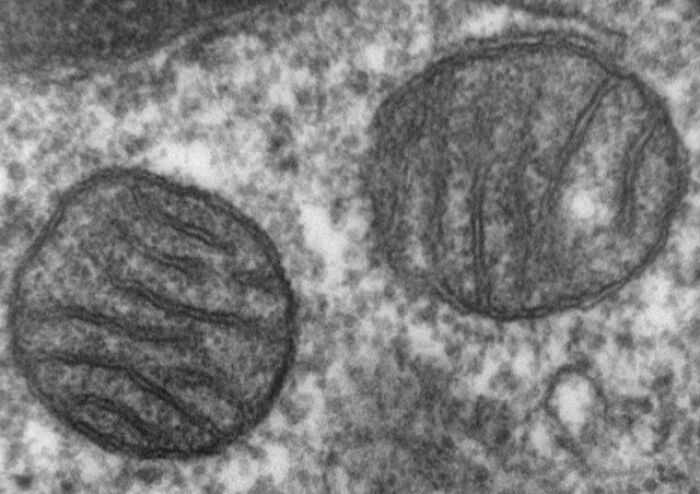 Since our mitochondria used to be separate single celled organisms, they have their own DNA
Since our mitochondria used to be separate single celled organisms, they have their own DNA
Humans are closer genetically to bonobos than chimpanzees.
I wish I was a bonobo.
 Some genetic diseases persist because having one copy of the disease causing version of that gene can have benefits, so even though having two copies is deadly, that copy of the gene doesn't go away in the population.
Some genetic diseases persist because having one copy of the disease causing version of that gene can have benefits, so even though having two copies is deadly, that copy of the gene doesn't go away in the population.
 Your immune system regulation genes (HLA) have a huge impact on how you smell!
Your immune system regulation genes (HLA) have a huge impact on how you smell!
Please clarify "how you smell". Do you mean how you use your sense of smell? Or do you mean your odor?
The green eyed gene is a recessive gene when compared to brown eyed gene; it is dominant when compared to blue eye gene.
 UV gives you cancer because literally makes your DNA stick so tightly the only way to fix it is remove the entire section then "guess" what was there. More this happens, more chance cell becomes cancerous.
UV gives you cancer because literally makes your DNA stick so tightly the only way to fix it is remove the entire section then "guess" what was there. More this happens, more chance cell becomes cancerous.
Bacteria don't have this polymerase repair so it's why UV kills them or mutates them.
Plant one - Hexaploid wheat possesses 42 chromosomes derived from its three ancestral genomes. The 21 pairs of chromosomes can be further divided into seven groups of six chromosomes (one chromosome pair being derived from each of the three ancestral genomes)... This is mainly because of how much humans have bred it it's literally inbred.
There are two completely different types of mutations. One is the single point mutation that affects only one gene and follows recessive/dominant rules. The other is a chromosomal disorder that affects dozens or even hundreds of genes at once. Chromosomal disorders are NOT diagnosable by genetic testing, only by looking at chromosomes under a microscope. Chromosomal disorders don't follow a recessive/dominant rule but instead a balanced/unbalanced rule. A balanced disorder is harmless but the child of a balanced disorder may be an unbalanced disorder, which can be very bad news. Most separation of species is due to chromosomal disorders, not due to single point mutations.
The best thing about proving genetics is also the worst thing. If something is proven true by genetics, then the person who has it cannot and should NOT be abused or "altered" for things that are out of their control (e.g. being born with schizophrenia). On the other hand, there are plenty of bigots would happily repeat history and misuse genetics to perpetrate eugenics and euthanasia.
This was easily the most interesting article that I have read on BP.
There are two completely different types of mutations. One is the single point mutation that affects only one gene and follows recessive/dominant rules. The other is a chromosomal disorder that affects dozens or even hundreds of genes at once. Chromosomal disorders are NOT diagnosable by genetic testing, only by looking at chromosomes under a microscope. Chromosomal disorders don't follow a recessive/dominant rule but instead a balanced/unbalanced rule. A balanced disorder is harmless but the child of a balanced disorder may be an unbalanced disorder, which can be very bad news. Most separation of species is due to chromosomal disorders, not due to single point mutations.
The best thing about proving genetics is also the worst thing. If something is proven true by genetics, then the person who has it cannot and should NOT be abused or "altered" for things that are out of their control (e.g. being born with schizophrenia). On the other hand, there are plenty of bigots would happily repeat history and misuse genetics to perpetrate eugenics and euthanasia.
This was easily the most interesting article that I have read on BP.

